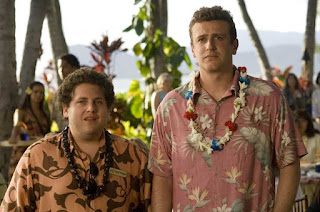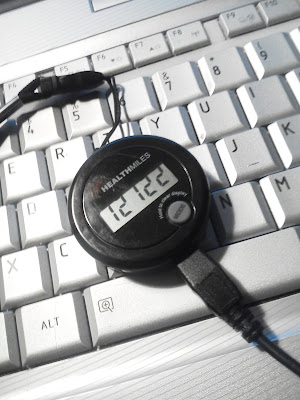Adjustments
The hardest thing to adjust to each time I move is the traffic.
Or -- far more accurately -- the other drivers.
I learned to drive in eastern South Dakota ... egads, thirteen years ago. (Not counting the handful of times I got to drive on the ranch. There it's a matter of, "Can you reach the pedals? Then you can help.") What this means is that you have to be able to go from a not-terribly-well-maintained gravel road to city streets without causing problems, and a driver's ed test will test exactly that. It doesn't sound so terribly taxing until you're actually in the situation with another hundred thousand cars.
And of course it gets easier.
But I'll get back to that. For comparison, there are plenty of other drivers to examine.
Rapid City drivers don't waste time. They're moderately polite, but if you're going to try to pull something they will gang up on you. (I mean this in terms of, say, racing down the open lane at a construction zone and then trying to merge when everybody else merged where they were told.) Streets in Rapid are confusing but navigable (there are plenty of streets that change names abruptly and confuse people greatly) and locals are almost always willing to give directions if you ask nicely. Most of all, it's spread out enough -- and designed well enough -- that traffic jams are rare.
Although during tourist season, all bets are off.
Wisconsin drivers, as far as I could tell, are all very much alike. Madison, Milwaukee, Green Bay, Wausau -- they pass on the right if you're turning left, they anticipate green lights, and traffic moves a little faster than the posted limit. Big city or small, it doesn't seem to matter where you are -- which helps a lot when you're coming in from the outside.
Minneapolis traffic is periodically obnoxious but fairly predictable. People will let you in (if you signal and don't hesitate) but if you're on an interstate during rush hour -- particularly I-494 -- odds are good you'll be awhile. Denver is, surprisingly, fairly similar, except that traffic jams there happen at 70mph. In both places it's all about confidence -- if you at least pretend you know where you're going, you'll be fine. Neither place has as many jerks as you would expect, although there are certainly exceptions. (Usually driving either sports cars or complete junkers that shouldn't physically move that fast.)
I tell you all this to get a couple points across. I don't get road rage-y too often. I'm not a complete rube. And I do have a bit of a basis for comparison.
Here's the thing: Sioux Falls traffic drives me nuts.
The Sioux Falls area has a population of over 200,000. It's not huge by any accounts, but it does amount to over 150,000 drivers. The catch? They drive like it's a tenth that size.
Maybe you see my issues here.
The biggest one seems to be that people just don't pay attention. They don't read signs, they don't watch for left-turners, they don't plan ahead, and for reasons I cannot comprehend, they go below the speed limit.
I know it's not everyone. But in this case, it's a large enough proportion to make a simple trip to the grocery store incredibly frustrating.
My biggest adjustment when I moved back? Rediscovering all the back roads and shortcuts so I can make the best of a bad situation. I'm finally getting to the point where I can avoid the worst of the hassle and blood pressure increases. Unfortunately, this may also mean I'm becoming more like the drivers around me.
I just hope I don't completely lose my edge. Denver is brutal on the unobservant.
Or -- far more accurately -- the other drivers.
I learned to drive in eastern South Dakota ... egads, thirteen years ago. (Not counting the handful of times I got to drive on the ranch. There it's a matter of, "Can you reach the pedals? Then you can help.") What this means is that you have to be able to go from a not-terribly-well-maintained gravel road to city streets without causing problems, and a driver's ed test will test exactly that. It doesn't sound so terribly taxing until you're actually in the situation with another hundred thousand cars.
And of course it gets easier.
But I'll get back to that. For comparison, there are plenty of other drivers to examine.
Rapid City drivers don't waste time. They're moderately polite, but if you're going to try to pull something they will gang up on you. (I mean this in terms of, say, racing down the open lane at a construction zone and then trying to merge when everybody else merged where they were told.) Streets in Rapid are confusing but navigable (there are plenty of streets that change names abruptly and confuse people greatly) and locals are almost always willing to give directions if you ask nicely. Most of all, it's spread out enough -- and designed well enough -- that traffic jams are rare.
Although during tourist season, all bets are off.
Wisconsin drivers, as far as I could tell, are all very much alike. Madison, Milwaukee, Green Bay, Wausau -- they pass on the right if you're turning left, they anticipate green lights, and traffic moves a little faster than the posted limit. Big city or small, it doesn't seem to matter where you are -- which helps a lot when you're coming in from the outside.
Minneapolis traffic is periodically obnoxious but fairly predictable. People will let you in (if you signal and don't hesitate) but if you're on an interstate during rush hour -- particularly I-494 -- odds are good you'll be awhile. Denver is, surprisingly, fairly similar, except that traffic jams there happen at 70mph. In both places it's all about confidence -- if you at least pretend you know where you're going, you'll be fine. Neither place has as many jerks as you would expect, although there are certainly exceptions. (Usually driving either sports cars or complete junkers that shouldn't physically move that fast.)
I tell you all this to get a couple points across. I don't get road rage-y too often. I'm not a complete rube. And I do have a bit of a basis for comparison.
Here's the thing: Sioux Falls traffic drives me nuts.
The Sioux Falls area has a population of over 200,000. It's not huge by any accounts, but it does amount to over 150,000 drivers. The catch? They drive like it's a tenth that size.
Maybe you see my issues here.
The biggest one seems to be that people just don't pay attention. They don't read signs, they don't watch for left-turners, they don't plan ahead, and for reasons I cannot comprehend, they go below the speed limit.
I know it's not everyone. But in this case, it's a large enough proportion to make a simple trip to the grocery store incredibly frustrating.
My biggest adjustment when I moved back? Rediscovering all the back roads and shortcuts so I can make the best of a bad situation. I'm finally getting to the point where I can avoid the worst of the hassle and blood pressure increases. Unfortunately, this may also mean I'm becoming more like the drivers around me.
I just hope I don't completely lose my edge. Denver is brutal on the unobservant.


Comments